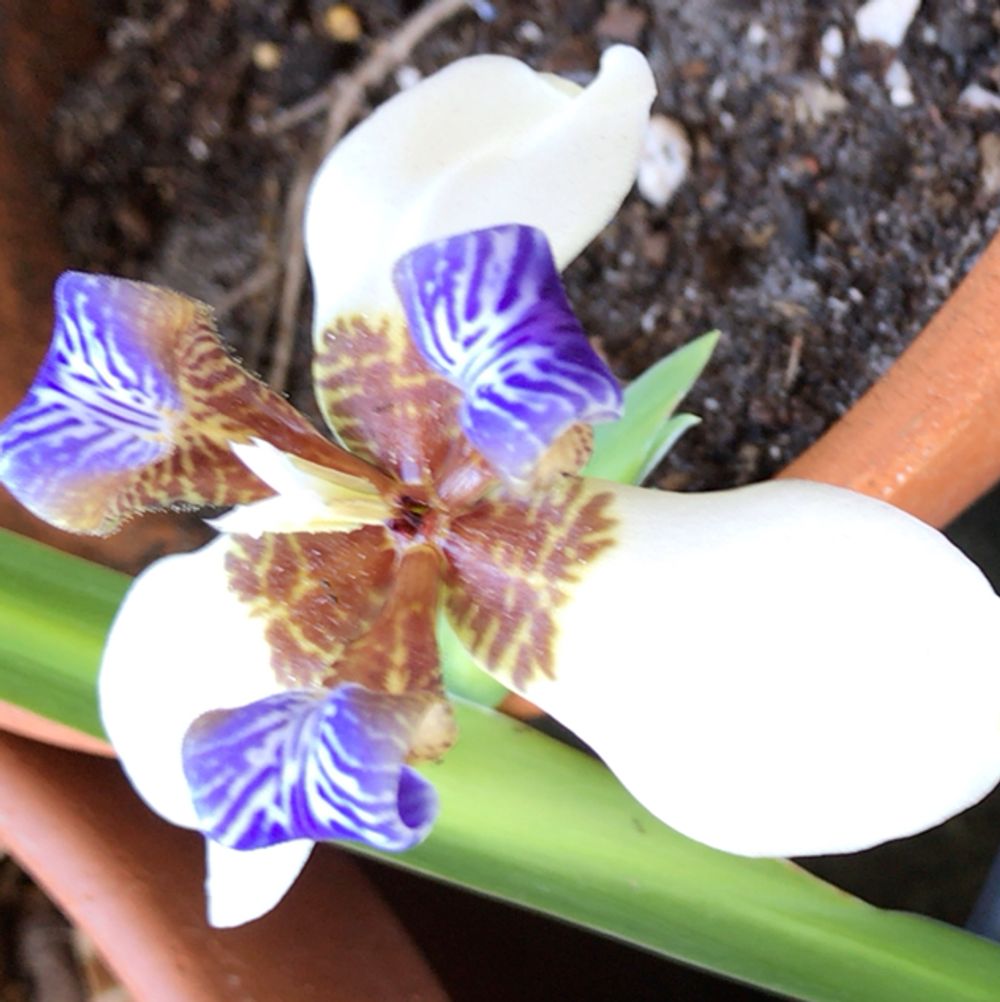Neomarica coerulea
(Neomarica coerulea)

Description
Neomarica (walking iris, apostle's iris or apostle plant – names also used for the related genus Trimezia) is a genus of plants in family Iridaceae, first described in 1928. It is native to Mexico, Central and South America, and Trinidad & Tobago. The genus name is derived from the Greek words neo, meaning "new", and Marica, the Roman nymph. They are herbaceous perennial plants that propagate by way of a thick rhizome and new plantlets that develop from the stem where flowers once emerged. The plants grow erect, and have long slender lanceolate leaves from 30–160 cm long and 1–4 cm broad, depending on the species. They produce very fragrant flowers that last for a short period of time, often only 18 hours. The flowers emerge from what appears to be just another leaf, but is really a flower stalk structured to look like the other leaves; they are 5–10 cm diameter, and somewhat resemble Iris flowers. After pollination, the new plantlet appears where the flower emerged and the stalk continues to grow longer. The weight of the growing plantlet causes the stalk to bend toward the ground, allowing the new plantlet to root away from its parent. This is how it obtained the common name of "Walking Iris". The other common name "Apostle Plant" comes from the belief that the plant will not flower until the individual has at least 12 leaves, the number of apostles of Jesus. Neomarica is placed in the tribe Trimezieae, along with the genera Trimezia, Pseudotrimezia and Pseudiris. Neomarica is similar to the genus Trimezia; the same common names are used for both genera. Morphological characters that have been used to distinguish the two include the flower stalk (scape): in Neomarica it is flattened and leaf-like whereas in Trimezia it is circular in cross-section. (See Trimezia: Distinction from Neomarica.) However, molecular phylogenetic studies have not upheld any of the genera within the tribe Trimezieae; three of the four main clades found combine species from more than one genus. Some Neomarica species such as N. northiana, N. longifolia, and N. caerulea are common ornamental plants that are easily cultivated both in gardens in subtropical and tropical regions, and as houseplants in temperate areas.
Taxonomic tree:







